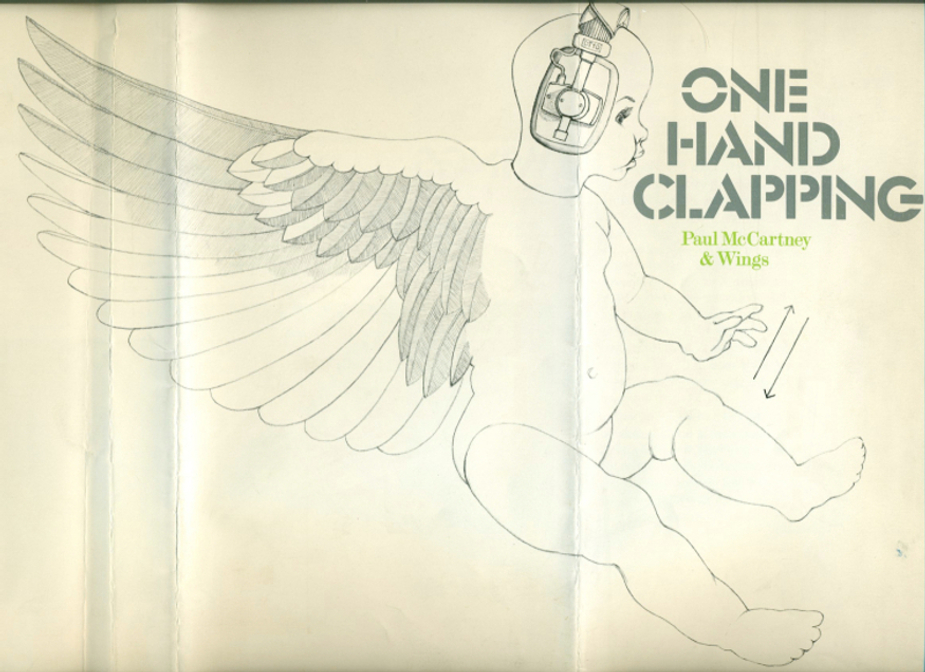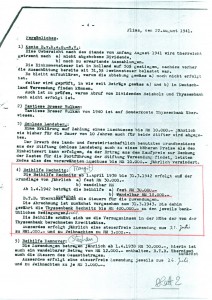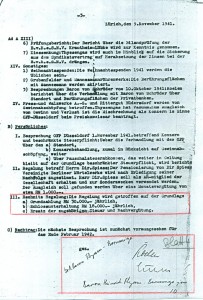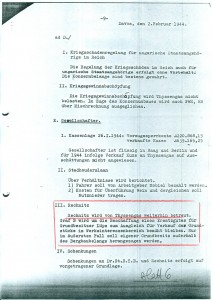May, 2010
Monday, May 17th, 2010
El Mundo has claimed Tita (Cervera Thyssen) privately admitted she used her son Borja’s sperm to impregnate the Los Angeles based surrogate mother of her twin girls. Such things are illegal in Spain but apparently not in California, where, particularly in the City of Angels, they have yet to sanction topless bathing but seem OK with technical incest. Assuming both Tita and El Mundo are telling the truth, what do you think? Either morally, religiously or as the source of a plot for a new Almodovar movie, I would really appreciate your comments, particularly from Spain and LA.
(For the English translation of the El Mundo article, click here: 100515ElMundoTwinPeaks).
 Tita Thyssen (photo: El Pais, Spain) Silvia Hl from Spain writes: ‘La sola imagen del tinglado es digna de la más sórdida historia del pueblo profundo. Y se hacen llamar aristocracia. Sea verdad o mentira, es asqueroso. Endogámicos pervertidos! The sole image of the makings makes one think of sordid, weird peoples from other ages. It is a real shame that Spain has to deal with guys like these. As for LA and USA, hypocrites!’
Michael Hecht in London says: ‘Spooky’.
Marta Cibelina blogs: ‘In Spain, it is forbidden to reveal the identity of a sperm donor and not permitted for a woman over 60 to adopt a child. In Spain, it is also illegal to use surrogate mothers to conceive. The story of Tita’s adoption therefore provokes a sick feeling in people. The best one/she could do is to keep quiet about it all. But today, I heard her on a programme saying ‘of course I know who the biological father of my twins is’. Yet, the logical thing would be for her not to know and if she does, it’s something that only concerns her daughters and nobody else. In Spain, we have different values and laws concerning adoption and in vitro fertilisation. For better or worse, these girls will be raised in our country and in our culture’.
Jonathan VS in Spain twitters: ‘The Jet-Set is like that…..What the hell….’.
petitemaoiste twitters: #novelendogamy #inbredaristocrats #aristocratasdegenerados
jarais in Boston twitters: Squicky rumors from Spanish jet set that baronesa thyssen’s rent-a-womb twins fathered by her grown son #toomuchmoney #thosepoorkids #rentawombnightmare
Carlos, the Spanish barman at the Cowes Corinthian Yacht Club says: ‘This reminds me of the Woody Allen syndrome’. (For those who don’t remember: Woody left his wife to pursue a relationship with their adopted daughter).
JotaInKoelle says: ‘Yo mientras no lo use para cocinar no me sorprendo de nada’.
Tags: Almodovar, aristocrats, Borja, California, Cervera, City of Angels, El Mundo, endogamy, incest, jet set, Los Angeles, Marta Cibelina, Spain, Thyssen, Tita, Woody Allen
Posted in The Thyssen Art Macabre, Thyssen Family Comments Off on Incest?
Monday, May 17th, 2010
Dear Francisco Valdepenas Maruenda,
In answer to your question concerning my work as a painter, I have nothing small enough to scan in, so I have included an illustration I did for the documentary I made for Paul McCartney. Funnily enough, it also seems to have some relevance for the unfolding story of Tita Cervera and the El Mundo revelations concerning her alleged use of her son Borja’s sperm for the impregnation of the surrogate mother of her adopted ‘angels’.
To see the film, click here: http://www.youtube.com/watch?v=CG0oS14pOhE (unfortunately, the video has now been removed)

Tags: El Mundo, Francisco Valdepenas Maruenda, Paul McCartney, Tita Cervera
Posted in etc. etc. Comments Off on All My Own Work
Monday, May 3rd, 2010
| Quite why ThyssenKrupp have waited so long to authorise their archivist and historian, Manfred Rasch, to bring out a book of letters between August Thyssen and his son Heinrich, seems somewhat of a mystery. The two men have, after all, been dead for 84 and 63 years respectively. But the professor appears to confirm my belief that this is part of the corporate and family response to my book, by including a rather bizarre statement amongst the credits, which runs thus (page 10):
‘People who are less interested in historically substantiated studies with traceable references and who would rather form their opinions based on sex-and-crime journalism might be entertained by Litchfield, David: The Thyssen Art Macabre, London 2006 (German edition: Die Thyssen-Dynastie, Die Wahrheit hinter dem Mythos, Oberhausen 2008).’
I feel such a statement says more about Rasch than it does about me, and I appreciate the publicity it has afforded my book, including the increase in visits to this website, particularly from the Ruhr district. However, a recent critical review awarded Rasch’s book on Amazon by a reader in Munich might have been unlikely to have imbued him with a similar spirit of generosity:
‘Unfortunately, the title of this book is somewhat misleading, as of the 214 letters only 4 are by Heinrich Thyssen’s hand. It also does not limit the scope of its contents to the years 1919-1926 but includes furthermore a considerable amount of historical material on the history of the Thyssen family and its industries which has been written by Professor Manfred Rasch who is listed as editor of the book. As Professor Rasch is also the head of the archives at ThyssenKrupp, it makes it difficult to accept the impartiality of his views. The style of the book is academic and thus requires an overwhelming interest in the subject matter, as much is being taken up with supportive material in the form of bibliography, sources, commentaries etc.
One also gets the impression that this book, despite its size and the obvious complexity of the research, was in fact created in some haste, as on far too many occasions it sidesteps various historical issues by announcing that scientific research is still ongoing. But what I find even more surprising is the way Prof. Rasch deals with other authors, some of whom have published considerable research about the subject, for instance the Briton David R L Litchfield (‘The Thyssen Art Macabre’, in German: ‘Die Thyssen-Dynastie’), whose description of the murder of 180 Hungarian slave labourers during a party organised at Rechnitz Castle by Margit Thyssen-Bornemisza caused a big stir a few years ago. Prof. Rasch suggests that his readers should view Litchfield’s book as mere entertainment: just an alarming error of judgement or a worrying example of professional jealousy?
This is particularly disturbing in the light of the anti-Semitism in the Thyssen family (see letters dated 9.9.1919, 21.7.1923 and 30.7.1923) which the book presents to the interested public. All in all, however, this is a fascinating read which contains much material of interest to both amateur and professional historians’.
One certainly gets the impression that the corporation may now be trying somewhat too hard to paper over the cracks in their historiography. You may no longer be able to see the cracks but you can certainly see where they have been, which only serves to draw attention to the papering.
I was also particularly interested in the impression that ThyssenKrupp is now giving of having archives that are open to the public. This was certainly not the case when we were researching our book. In fact quite the opposite. However, Rasch still seems determined to believe that, having been denied access to his archives, we chose to create our book without documentary evidence. This is of course totally and completely inaccurate and an opinion that appears to have been based on his wishful thinking.
Apart from the fact that our book is most certainly based on fully documented evidence, Rasch, who is obviously holding me responsible for the cracks in his professional credibility, would perhaps have been better advised not to talk of ‘entertainment’ in connection with a family that was responsible for the financing and use of slave labour, in particular (but not exclusively) in the context of the Rechnitz massacre (which Rasch chooses to ignore, apart from providing a link to an Austrian website).
To assist Manfred Rasch with future editions of his book, I include in this post excerpts of documents confirming the Thyssens’ war-time financing of their SS-occupied castle in Rechnitz, documents which I can only assume he overlooked in his haste to publish his book. They concern meetings of Heinrich and his son Hans Heinrich Thyssen-Bornemisza (‘Heini’) with their managers Heinrich Lübke and Wilhelm Roelen on 22 August 1941 in Flims, on 9 November 1941 in Zurich and on 2 February 1944 in Davos and include details of the RM 400,000 loan from August Thyssen Bank Berlin to Rechnitz, yearly contributions of RM 30,000 for Margit Batthyany and RM 18,000 for the upkeep of the castle, as well as a notification that Thyssengas (then Thyssensche Gas- und Wasserwerke) was generally ‘looking after’ Rechnitz.
Scanned Document
Scanned Document-1
Scanned Document-2
(all excerpts of documents in this post are from the archives of David R L Litchfield and are to be reproduced with his permission only). |
 ThyssenKrupp's historian and archivist Prof. Manfred Rasch  Documents substantiating Thyssen funding of Rechnitz castle during the second World War (Archives of David R L Litchfield, not to be reproduced without permission)  Documents substantiating Thyssen funding of Rechnitz castle during the second World War (Archives of David R L Litchfield, not to be reproduced without permission)  Documents substantiating Thyssen funding of Rechnitz castle during the second World War (Archives of David R L Litchfield, not to be reproduced without permission) |
|
Tags: Amazon, anti-Semitism, archives, August Thyssen, August Thyssen Bank, Berlin, bibliography, Davos, Flims, Heinrich Lübke, Heinrich Thyssen-Bornemisza, historiography, Manfred Rasch, Margit Batthyany, Rechnitz, Ruhr, slave labour, sources, Thyssengas, ThyssenKrupp, Thyssensche Gas- und Wasserwerke, Wilhelm Roelen, Zurich
Posted in The Thyssen Art Macabre, Thyssen Corporate, Thyssen Family Comments Off on What have ThyssenKrupp’s historians been doing all this time?
|







